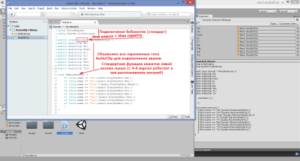REQUEST COMPLIMENTARY SQLS*PLUS LICENCE
EXCEPT SQL Server operator

The EXCEPT SQL statement is used to return all lines in the first SELECT statement that are not returned by the second SELECT statement. Each SELECT operator will define a data set. EXCEPT will extract all records from the first dataset and then delete all records from the second dataset from the results.
Request Except
Explanation: Requesting EXCEPT will return records in the blue shaded area. These are records that exist in the SELECT1 dataset, not in the SELECT2 dataset.
Each SELECT operator in an EXCEPT query must have the same number of fields in the result sets with the same data types.
Tip: EXCEPT statements are not supported in all SQL databases. It can be used in databases such as SQL Server, PostgreSQL and SQLite.
For databases such as Oracle, use the MINUS operator to execute this query type.
Syntax for EXCEPT operator in SQL
SELECT expr1, expr2, … expr_n
FROM tabs
[WHERE conds]
EXCEPT
SELECT expr1, expr2, … expr_n
FROM tabs
[WHERE conds];
where:
- expr1,2,_n – Columns or calculations that you want to get.
- tabs – The tables from which you want the records. The FROM sentence must contain at least one table.
- WHERE conds – It’s optional. These are the conditions that must be met to select records.
Both SELECT operators must have the same number of expressions.
The corresponding expressions must have the same data type in the SELECT sentence. For example: expr1 must have the same data type in both the first and second SELECT operators.
EXCEPT with one expression
Let’s consider an example of using EXCEPT operator in SQL, which returns one field with the same data type.
For example:
SELECT prod_id FROM prodsEXCEPTSELECT prod_id FROM invent;In this EXCEPT example, all prod_id values that are in the products table are returned, not in the inventory table. This means that if the prod_id value existed in the products table as well as the inventory table, the prod_id will not be displayed in the EXCEPT query results.
EXCEPT with multiple expressions
Next let’s look at an example of using an EXCEPT query in SQL that returns more than one column. For example:
SELECT cont_id, l_name, f_name FROM contsWHERE l_name = 'Bieber'EXCEPTSELECT cust_id, l_name, f_name FROM custsWHERE cust_id > 45;In this example EXCEPT query will return records from the contacts table with the values cont_id, l_name and f_name that do not match the values cust_id, l_name and f_name in the customers table.
EXCEPT using ORDER BY
Finally, let’s look at how to use the ORDER BY statement in an EXCEPT query in SQL. For example:
SELECT suppl_id, suppl_nameFROM supplsWHERE suppl_id < 30EXCEPTSELECT com_id, com_nameFROM comsWHERE state_1 = 'Florida'ORDER BY 2;In this EXCEPT example, since the column names of the two SELECT operators are different, it is more advantageous to refer to the columns in the ORDER BY sentence by their position in the result set. In this example, we sort the results by suppl_name / com_name in ascending order as ORDER BY 2.
The fields suppl_name / com_name are at position #2 in the result set.
MORE NEWS
PreambleNoSql is not a replacement for SQL databases but is a valid alternative for many situations where standard SQL is not the best approach for...
PreambleMongoDB Conditional operators specify a condition to which the value of the document field shall correspond.Comparison Query Operators $eq...
5 Database management trends impacting database administrationIn the realm of database management systems, moreover half (52%) of your competitors feel...
The data type is defined as the type of data that any column or variable can store in MS SQL Server. What is the data type? When you create any table or...
PreambleMS SQL Server is a client-server architecture. MS SQL Server process starts with the client application sending a query.SQL Server accepts,...
First the basics: what is the master/slave?One database server (“master”) responds and can do anything. A lot of other database servers store copies of all...
PreambleAtom Hopper (based on Apache Abdera) for those who may not know is an open-source project sponsored by Rackspace. Today we will figure out how to...
PreambleMongoDB recently introduced its new aggregation structure. This structure provides a simpler solution for calculating aggregated values rather...
FlexibilityOne of the most advertised features of MongoDB is its flexibility. Flexibility, however, is a double-edged sword. More flexibility means more...
PreambleSQLShell is a cross-platform command-line tool for SQL, similar to psql for PostgreSQL or MySQL command-line tool for MySQL.Why use it?If you...
PreambleWriting an application on top of the framework on top of the driver on top of the database is a bit like a game on the phone: you say “insert...
PreambleOracle Coherence is a distributed cache that is functionally comparable with Memcached. In addition to the basic function of the API cache, it...
PreambleIBM pureXML, a proprietary XML database built on a relational mechanism (designed for puns) that offers both relational ( SQL / XML ) and...
What is PostgreSQL array? In PostgreSQL we can define a column as an array of valid data types. The data type can be built-in, custom or enumerated....
PreambleIf you are a Linux sysadmin or developer, there comes a time when you need to manage an Oracle database that can work in your environment.In this...
PreambleStarting with Microsoft SQL Server 2008, by default, the group of local administrators is no longer added to SQL Server administrators during the...















